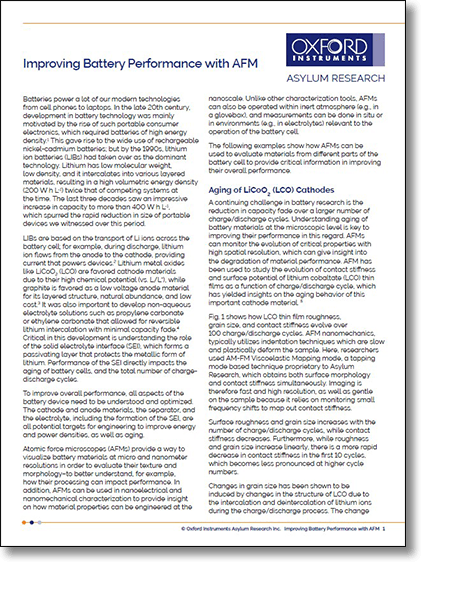AFM Systems
AFM Accessories
Learning
Contact Us
Batteries power a lot of our modern technologies from cell phones to laptops. In the late 20th century, development in battery technology was mainly motivated by the rise of such portable consumer electronics, which required batteries of high energy density. In the 1990s, lithium ion batteries (LIBs) had taken over as the dominant technology. The last three decades saw an impressive increase in capacity to more than 400 W h L-1, which spurred the rapid reduction in size of portable devices we witnessed over this period.
To improve overall performance, all aspects of the battery device need to be understood and optimized. The cathode and anode materials, the separator, and the electrolyte, including the formation of the SEI, are all potential targets for engineering to improve energy and power densities, as well as aging.
Atomic force microscopes (AFMs) provide a way to visualize battery materials at micro and nanometer resolutions in order to evaluate their texture and morphology–to better understand, for example, how their processing can impact performance. In addition, AFMs can be used in nanoelectrical and nanomechanical characterization to provide insight on how material properties can be engineered at the nanoscale. Unlike other characterization tools, AFMs can also be operated within inert atmosphere (e.g., in a glovebox), and measurements can be done in situ or in environments (e.g., in electrolytes) relevant to the operation of the battery cell.
This application note describes:
